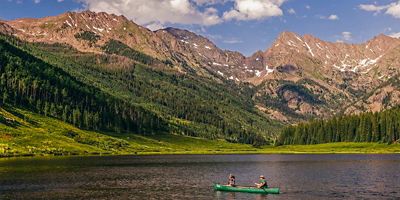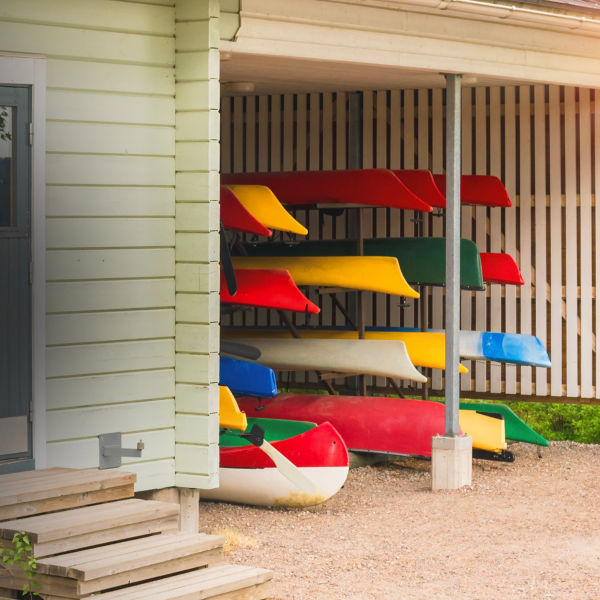
Before you play voyageur and head off canoeing into the wild blue yonder, you’ll need a solid paddle—otherwise, you’ll be up a creek without one. Several factors go into picking the right canoe paddle, from materials, shape and length, to even the choice between a straight or bent shaft (yes, there is such a thing). Following are a few pointers to get you stroking in the right direction.
Sizing
Canoeists are opinionated, and there are certainly many viewpoints regarding the ideal paddle length—varying with the boat and type of water, seating position (whether you prefer to sit or kneel) and stroke mechanics. In general, experts agree to get the shortest paddle that allows you to still reach the water. When paddling, your top hand should be at about nose height in the middle of your stroke, with the paddle throat (where the shaft meets blade) at the water line.
Go slightly longer if you're paddling in whitewater or shallow creeks where you need maneuverability, and shorter for narrower canoes. Hint: Most manufacturers have charts to help determine sizing. Helpful trick: Sit on a chair and measure your torso, from between your legs to your nose; 26 inches equals a 52-inch paddle; 28 equals 54; 30 equals 56; 32 equals 58; and 34 equals 62 (subtract 4 inches for bent-shaft paddles). To measure in the field, place the paddle’s grip between your legs while sitting; the throat should be at your forehead (with a bent shaft it should be at your nose). Another trick for at the store: Grab the paddle with one hand on the grip and the other at the throat, then place it over your head. If your arms are perpendicular, elbows bent at 90 degrees, it fits. If they’re bent outward, it’s too long; bent inwards, too short.
Sizing also varies depending on blade shape and canoe style. For beavertail (rounded) blade designs, size up 2 to 4 inches to accommodate the shorter shaft. For narrower tripping canoes, those with tumblehome (inward-leaning gunwales, pronounced “gunnels”), or low seats, use a shorter shaft. For wider canoes, boats with flared top edges (outward gunwales), or those with high seats, go slightly longer.
Straight vs. Bent Shaft
Straight-shaft canoe paddles are great for all-around paddling, offering control and maneuverability for technical rivers; it doesn’t matter which way the blade faces. Bent shafts, where the blade is angled forward (usually 11 degrees or so), are more efficient for long-distance trips. The angle increases reach and allows the blade to remain vertical in the water longer, requiring less energy for a more efficient stroke; this makes them good for racing and longer trips. Hint: Make sure the blade bend is angled forward when using. Solo and stern paddlers often use longer, straight shafts for easier steering with increased leverage, while bow paddlers often use shorter, bent shafts for easier strokes to provide more forward momentum.




















